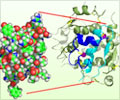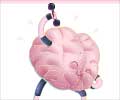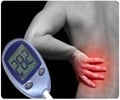In people with type 2 diabetes mellitus, moderate-intensity exercise reduces fat stored around the heart, in the liver and abdomen, finds study published in Radiology.

Exercise is recommended for people with diabetes, but its effects on different fat deposits in the body are unclear, according to the study's senior author, Hildo J. Lamb, M.D., Ph.D., from the Department of Radiology at Leiden University Medical Center in the Netherlands.
"Based on previous studies, we noticed that different fat deposits in the body show a differential response to dietary or medical intervention," he said. "Metabolic and other effects of exercise are hard to investigate, because usually an exercise program is accompanied by changes in lifestyle and diet."
For the new study, Dr. Lamb and colleagues assessed the effects of exercise on organ-specific fat accumulation and cardiac function in type 2 diabetes patients, independent of any other lifestyle or dietary changes. The 12 patients, average age 46 years, underwent MRI examinations before and after six months of moderate-intensity exercise totaling between 3.5 and six hours per week and featuring two endurance and two resistance training sessions. The exercise cycle culminated with a 12-day trekking expedition.
MRI results showed that, although cardiac function was not affected, the exercise program led to a significant decrease in fat volume in the abdomen, liver and around the heart, all of which have been previously shown to be associated with increased cardiovascular risk.
"In the present study we observed that the second layer of fat around the heart, the peracardial fat, behaved similarly in response to exercise training as intra-abdominal, or visceral fat," Dr. Lamb said. "The fat content in the liver also decreased substantially after exercise."
Advertisement
"The liver plays a central role in regulating total body fat distribution," he said. "Therefore, reduction of liver fat content and visceral fat volume by physical exercise are very important to reverse the adverse effects of lipid accumulation elsewhere, such as the heart and arterial vessel wall."
Advertisement
"In the future, we hope to be able to use advanced imaging techniques to predict in individual patients which therapeutic strategy is most effective: diet, medication, exercise, surgery or certain combinations," Dr. Lamb said.
Source-Eurekalert















